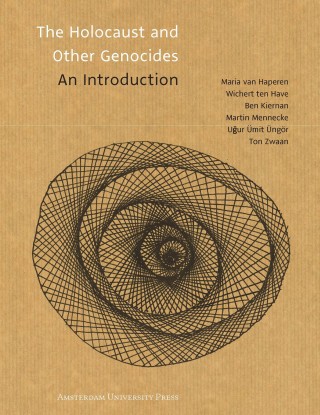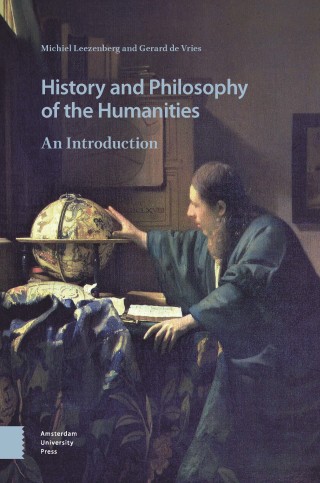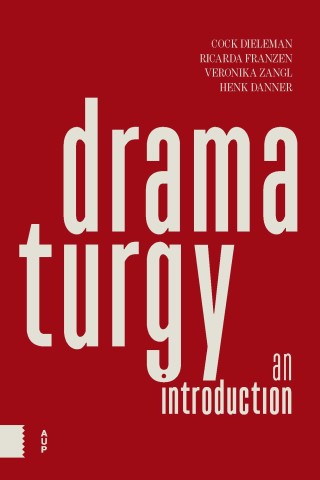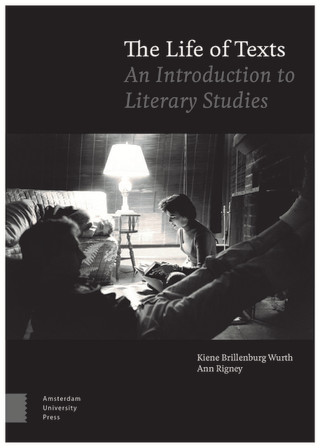
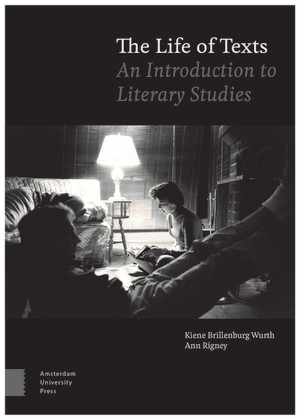
- Titel
- The Life of Texts
- Subtitel
- An Introduction to Literary Studies
- Prijs
- € 39,99
- ISBN
- 9789048551903
- Uitvoering
- eBook PDF (Adobe DRM)
- Aantal pagina's
- 432
- Taal
- Engels
- Publicatiedatum
- 28 - 08 - 2019
- Afmetingen
- 1.7 x 2.4 cm
- Discipline
- Taal en Literatuur
- Voorbeeld
- Download introductie
- Ook beschikbaar als
- Paperback - € 41,99
Foreword
Acknowledgements
SECTION 1: INTRODUCTION
Chapter 1: The Field Ann Rigney
1.1 Introduction: Academic frameworks
1.2 Knowledge production is work in progress
1.3 Academic disciplines: Hard and 'soft'?
1.4 Humanities and the study of culture
1.5 Cultural studies and its challenges
1.6 Literary studies at an interdisciplinary crossroads
1.7 Areas of specialisation within literary studies
1.8 In conclusion: Discipline and diversity
Chapter 2: The Many Dimensions of Literature Ann Rigney
2.1 Introduction: Durable texts
2.2 Poetic language
2.3 Narrative
2.4 Reflection
2.5 Pleasure
2.6 Classification: Genres
2.7 Valuation and canon formation
2.8 In conclusion: The intersection of text and value
SECTION 2: TEXTS
Chapter 3: Texts and Intertextuality Ann Rigney
3.1 Introduction: The Greats escape
3.2 Texts
3.3 Intertextuality: The relationships between texts
3.4 Singularity: Between old and new
3.5 In conclusion: The undead author
Chapter 4: Intermedial Poetics Kiene Brillenburg Wurth
4.1 Introduction: Intermediality and the poetic
4.2 Poetic theory, poetry, and beyond
4.3 Rhythm and metre in sound and image
4.4 Irony
4.5 Metaphor and montage
4.6 Transmediality and remediation
4.7 Intermedia, intermediality, and multimediality
4.8 In conclusion: Literary studies and media studies
Chapter 5: Narrative Ann Rigney
5.1 Introduction: Narratology
5.2 Narrative and story: Two sides of the same coin
5.3 Characters and their world
5.4 Plot models
5.5 Narrative techniques
5.6 Identity and identification: Gender
5.7 In conclusion: What is a fulfilled life?
SECTION 3: READING
Chapter 6: Readers, Reading Kiene Brillenburg Wurth
6.1 Introduction
6.2 A Short History of Reading I: Writing to print
6.3 A Short History of Reading II: Print and beyond
6.4 How Texts Engage their readers
6.5 Reception studies
6.6 Cognitive and sociological studies of reading
6.7 In conclusion: The agency of readers
Chapter 7: Meaning and Interpretation Kiene Brillenburg Wurth
7.1 Introduction: interpretation and meaning-making
7.2 The work of interpretation: allegoresis and hermeneutics
7.3 Dialogic hermeneutics
7.4 Signs and signification: a semiological perspective
7.5 Word, after word, after word: Différance and deconstruction
7.6 In conclusion: The range of interpretation
Chapter 8: Between Elite and Mass Culture Kiene Brillenburg Wurth
8.1 Introduction: canons and canon debates
8.2 Mass culture and artistic culture
8.3 Symbolic capital and cultural elite
8.4 Folk and elite culture intertwined
8.5 Canon-makers and canon-breakers
8.6 There is art in mass media
8.7 In conclusion: power to the users
SECTION 4: CONTEXTUAL APPROACHES
Chapter 9: Imagination in a Changing World Ann Rigney
9.1 Introduction: A happy househusband
9.2 Texts and cultural context
9.3 Why does literature keep changing, and how?
9.4 Can literature change the world?
9.5 Case study: Ecocriticism
9.6 In conclusion
Chapter 10: Literature and Postcolonial Criticism Kiene Brillenburg Wurth
10.1 Introduction: spaces in the background
10.2 Imperialism, colonialism, postcolonialism, and the decolonial
10.3 Colonial discourses and the question of power
10.4 Analysing colonial discourses, interrogating power and identity
10.5 Postcolonial literature: The Other writes back
10.6 In conclusion: texts and cultural identities
Chapter 11: Literature and Cultural Memory Ann Rigney
11.1 Introduction: literature in/and time
11.2 Cultural memory studies
11.3 Narrating events
11.4 Remediation and the dynamics of cultural memory
11.5 Literature and 'unforgetting'
11.6 Canons and their contestation
11.7 In conclusion: literature and collective identities
GLOSSARY
SCHOOLS IN LITERARY STUDIES
LIST OF ILLUSTRATIONS
Recensies en Artikelen
"This introduction to literary studies is set to become the standard for the next generation. With its attention to the narrative, cultural, and (inter)medial dimensions of the 'life of texts', it skillfully provides access to a rich and dynamic field. Highly recommended as a reliable and immensely readable companion to all graduate and postgraduate students of modern literatures."
Astrid Erll, Professor of Anglophone Literatures and Cultures at Goethe University Frankfurt
"The book is a smart, coherent guide to the humanities and to literary studies in particular. The Life of Texts introduces literary studies as a field with history and an always-developing vocabulary, presenting literary studies as part of (and not separate from) lived cultural experience. From advertisements to the avant-garde, structuralism to media studies, this book seems to cover (or at least connect to) it all. Organized and designed with a visual clarity that facilitates ease of engagement with complicated terms, ideas, and historical knowledge, this book will support the teaching of literary studies as well as, and perhaps more importantly, learning about why such learning matters."
Jessica Pressman, Associate Professor of English and Comparative Literature at San Diego State University
Astrid Erll, Professor of Anglophone Literatures and Cultures at Goethe University Frankfurt
"The book is a smart, coherent guide to the humanities and to literary studies in particular. The Life of Texts introduces literary studies as a field with history and an always-developing vocabulary, presenting literary studies as part of (and not separate from) lived cultural experience. From advertisements to the avant-garde, structuralism to media studies, this book seems to cover (or at least connect to) it all. Organized and designed with a visual clarity that facilitates ease of engagement with complicated terms, ideas, and historical knowledge, this book will support the teaching of literary studies as well as, and perhaps more importantly, learning about why such learning matters."
Jessica Pressman, Associate Professor of English and Comparative Literature at San Diego State University
Kiene Brillenburg Wurth, Ann Rigney
The Life of Texts
An Introduction to Literary Studies
De onderstaande tekst is niet beschikbaar in het Nederlands en wordt in het Engels weergegeven.
This innovative introduction to literary studies takes 'the life of texts' as its overarching frame. It provides a conceptual and methodological toolbox for analysing novels, poems, and all sorts of other texts as they circulate in oral, print, and digital form. It shows how texts inspire each other, and how stories migrate across media. It explains why literature has been interpreted in different ways across time. Finally, it asks why some texts fascinate people so much that they are reproduced and passed on to others in the form of new editions, in adaptations to film and theatre, and, last but not least, in the ways we look at the world and act out our lives.
The Life of Texts is designed around particular issues rather than the history of the discipline as such. Each chapter concentrates on a different aspect of 'the life of texts' and introduces the key debates and concepts relevant to its study. The issues discussed range from aesthetics and narrative to intertextuality and intermediality, from reading practices to hermeneutics and semiotics, popular culture to literary canonisation, postcolonial criticism to cultural memory. Key concepts and schools in the field have been highlighted in the text and then collected in a glossary for ease of reference. All chapters are richly illustrated with examples from different language areas.
The Life of Texts is designed around particular issues rather than the history of the discipline as such. Each chapter concentrates on a different aspect of 'the life of texts' and introduces the key debates and concepts relevant to its study. The issues discussed range from aesthetics and narrative to intertextuality and intermediality, from reading practices to hermeneutics and semiotics, popular culture to literary canonisation, postcolonial criticism to cultural memory. Key concepts and schools in the field have been highlighted in the text and then collected in a glossary for ease of reference. All chapters are richly illustrated with examples from different language areas.
Auteurs
Kiene Brillenburg Wurth
Kiene Brillenburg Wurth is hoogleraar Literatuur en Vergelijkende Media aan de Universiteit Utrecht.
Ann Rigney
Ann Rigney bekleedt de leerstoel Vergelijkende Literatuur aan de Universiteit Utrecht.

